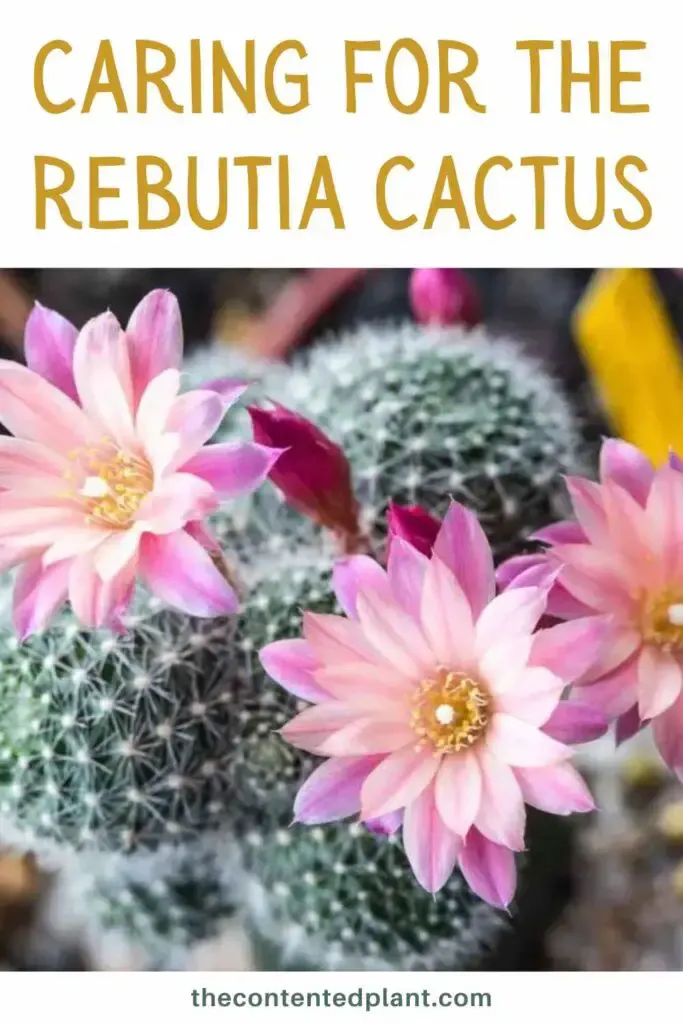The Enchanting Rebutia Cactus are plants of beauty and resilience. These South American natives originate in the Andes mountains of Bolivia and Argentina. Like other cactus that grow in marginal systems, these low maintenance cacti thrive in the hot dry conditions most plants find intolerable.
They are also astonishingly pretty and small enough to go just about anywhere. Rebutias bring a touch of natural wonder and desert charm to any plant collection.
This diverse group of cacti are a hit with succulent enthusiasts. With their striking flower colors, and fascinating forms, rebutia cacti are one of nature’s many examples of artistry and efficiency. Prepare to embrace the enchanting sub genus of rebutia cacti.
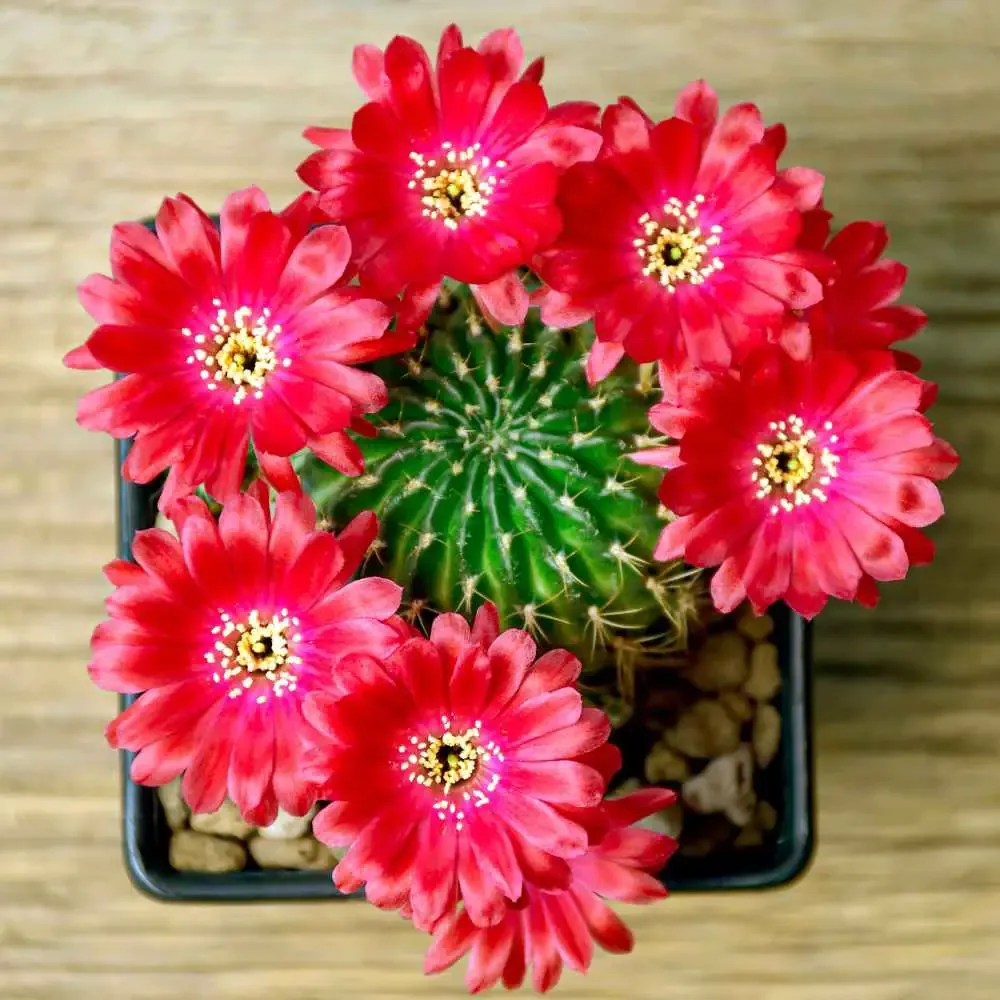
What is the common name of Rebutia? The common name for Rebutia cacti is often simply “Rebutia.” However, now that Rebutia is reclassified and merged into the Echinopsis genus, as a sub genus, it is more commonly known as “Echinopsis subg. Rebutia.”
The taxonomy of these plants is ever changing as new information arises. Recently it has been reclassified as Lobivia. So watch the labeling on these plants when you see them in the shops. It can be confusing to know what you are getting.
How big do Rebutia grow? Rebutia cacti, are small to medium-sized cacti that grow to about 2 to 8 inches, depending on the variety you have. Rebutia cacti have a short cylindrical shape with a diameter ranging from 2 to 6 inches.
Love these cuties for their compact size and charm. They are perfect for small spaces, windowsills, or as part of any collection of diverse cacti and succulents.
What is the difference between Sulcorebutia and Rebutia? Sulcorebutia and Rebutia cacti have many similarities in size, growth habits and the flowers they produce. It can be difficult to tell them apart. However, here is one clue. Sulcorbuitas tend to have denser spination and more prominent areoles compared to Rebutia cacti.
Common Varieties of Rebutia:
Here are a few commonly available varieties or species of Rebutia cacti that you may come across:
- Rebutia albiflora: This species features globular stems and produces white or pale pink flowers with yellow centers.
- Rebutia marsoneri: Known for its vibrant blooms, Rebutia marsoneri showcases bright red to orange flowers atop its globular body.
- Rebutia muscula: With its dense covering of spines and clustering growth habit, Rebutia muscula displays red, orange, or yellow flowers.
- Rebutia heliosa: This species features bright yellow to golden flowers that contrast beautifully against its green stems.
- Rebutia senilis: Recognizable by its dense white spines, Rebutia senilis produces vibrant red, orange, or yellow flowers.
- Rebutia pygmaea: With its small size and clustering growth habit, Rebutia pygmaea showcases pink, orange, or yellow flowers.
- Rebutia canigueralii: This species is known for its distinctive tubercles (raised bumps) on the stems and produces bright red or orange flowers.
These are just a few examples of commonly available Rebutia cacti. There are numerous other species and cultivars within the genus.
Sourcing Rebutia Cacti:
When looking for specific varieties check with local nurseries, cactus specialty stores, or online sellers that offer a wide selection of cacti.
Because this group of cactus has been reclassified several times it may have several interchangeable names in shops. This is not a rare group of cacti though and you have a good chance of spotting one in a specialized cacti garden shop.
Otherwise, the internet is your best bet. We recommend ETSY as a good source for plants. Search for Lobivia, rebutia and Sulcorbuitas, since they will be listed under all of these and the genus Echinopsis. Choose a well rated shop with MANY reviews. These ETSY plant shops are mostly owned by families and they are experts in shipping and the products they sell.
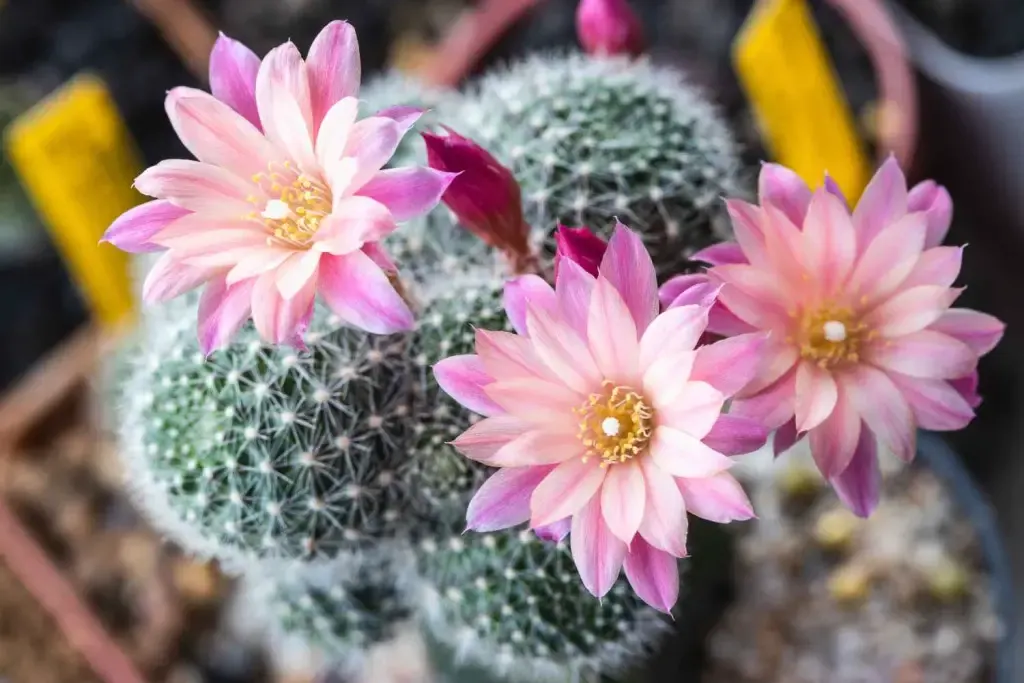
How Do you Take Care Of A Rebutia Cactus?
General care requirements for Rebutia cacti are simple and non demanding. There needs are fairly typical of most indoor cactus plants. Here’s detailed guide in table form below.
| Care Aspect | Description |
|---|---|
| Light | Bright, indirect sunlight. Some species can tolerate partial shade. Protect from intense, direct sunlight. |
| Temperature | Warm to hot temperatures. Most species prefer a range of 65-85°F during the growing season. Provide cooler temperatures in winter, around 50-60°F, for dormancy. |
| Watering | Allow the soil to dry out between waterings. Water thoroughly and then let excess water drain away. Avoid overwatering, especially in winter when the cactus is dormant. |
| Soil | Use a well-draining cactus or succulent mix. It should be gritty and have good drainage. Adding perlite or sand can help improve drainage. |
| Fertilization | Fertilize during the growing season (spring to summer) with a balanced, water-soluble cactus fertilizer diluted to half-strength. Avoid fertilizing in winter. |
| Humidity | Rebutia cacti prefer low to moderate humidity levels. Good air circulation is beneficial. |
| Potting | Use shallow pots with drainage holes to accommodate their shallow root system. Repot every 2-3 years or when the cactus outgrows its current pot. |
| Propagation | These cacti can be propagated from offsets (pups) or by seeds. Offsets can be carefully separated and replanted. Seeds require well-draining soil and warm temperatures to germinate. More detail on propagation below. |
| Dormancy | Many rebutia species go through a winter dormancy period. Reduce watering and provide cooler temperatures during this time to encourage dormancy. |
| Pests and Diseases | Watch for common cactus pests like mealybugs, scale insects, and spider mites. Ensure good airflow and avoid overwatering to prevent fungal diseases. |
Remember that specific care requirements may vary depending on the species and individual plant. It’s always beneficial to research the specific needs of the particular species you have.
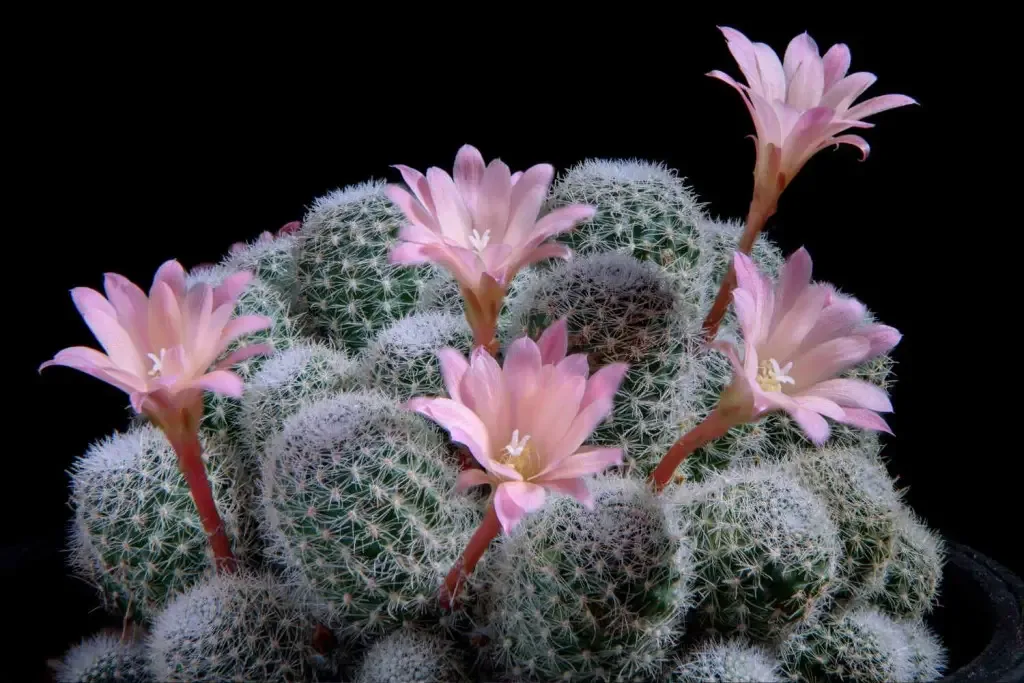
Information on Rubutia Flowers:
Rubutia cactus true marvel is their vivid, showy blossoms. During the spring and early summer, these extraordinary cacti burst forth with their bright flowers. From fiery reds and sunny yellows to delicate pinks and oranges, their funnel-shaped blooms offer vibrancy and elegance wherever you place them.
However, not all the rebuts flower equally. Some species may not flower every year. Also, the size and intensity of the blooms can depend on factors like age, health, and environmental conditions. Patience and consistent care are key when waiting for your cactus to flower.
Here is some general information on how and when they flower:
- Flowering Season: Rebutia cacti typically flower in the spring or early summer, although some species may bloom at other times of the year. The exact flowering season can vary depending on the species, environmental conditions, and the geographic location of the plant.
- Flower Appearance: The flowers are usually funnel-shaped or tubular, with numerous petals radiating from the center. The flowers can come in a wide range of colors, including shades of red, yellow, orange, pink, and sometimes even white. Some species produce large, showy flowers, while others may have smaller blooms.
- Flower Duration: The duration of flowers can vary, but normally each flower lasts for a few days to a week. Some species may produce multiple flowers simultaneously, creating a more extended flowering display.
- Environmental Triggers: Flowering in these cacti is often influenced by temperature changes, day length, and light intensity. Many rebutia species require a period of cooler temperatures and shorter day lengths in winter to induce flowering. Providing adequate sunlight and proper care throughout the year can also promote flowering.
- Care Factors: Providing appropriate care can increase the chances of your Lobivia cactus blooming. Ensure your cactus receives sufficient sunlight, proper watering (avoid overwatering), and appropriate temperature fluctuations during the year. Adequate fertilization during the growing season can also contribute to healthy flowering.
By providing optimal light, temperature fluctuations, proper watering, fertilization, and maintaining a healthy growing environment you can encourage your pretty cactus to bloom.
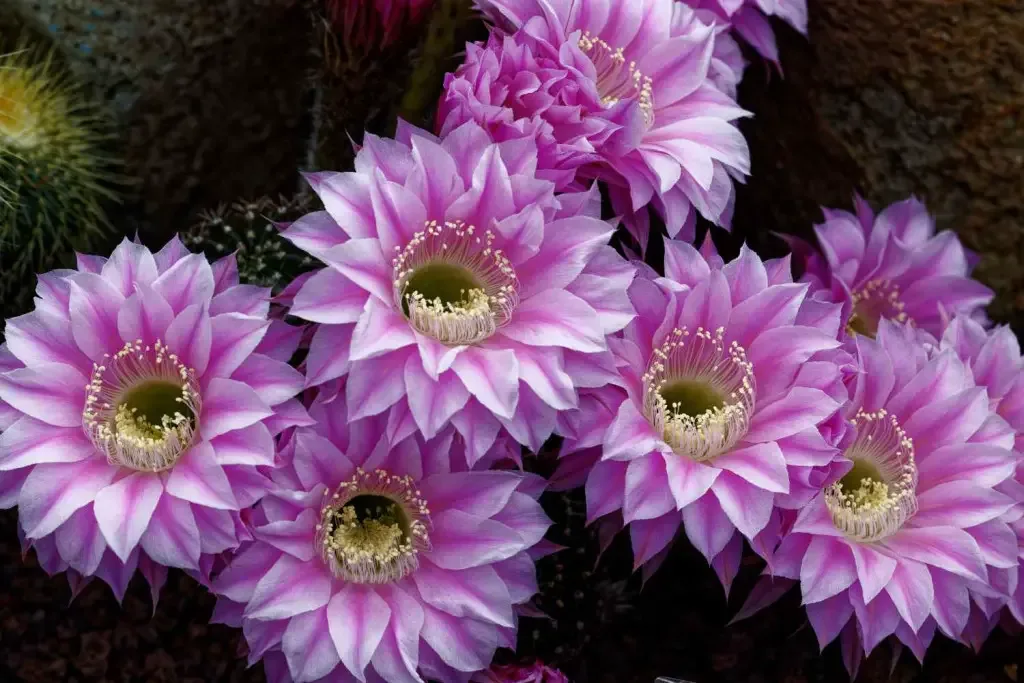
How to Propagate Rebutia Cactus:
Lobivia cacti can be propagated through two primary methods: offsets (pups) and seeds. Here’s a breakdown of each propagation method:
Remember to provide proper care, including appropriate lighting, temperature, and watering, for the propagated plants to ensure their healthy growth and development.
Propagating Offsets (Pups):
- Lobivia cacti often produce offsets, also known as pups, around the base of the main plant. These small, genetically identical clones can be separated and propagated to grow new individual plants.
- To propagate through offsets, wait until the pups are a reasonable size, typically around one-third the size of the parent plant.
- Gently remove the pup from the main plant by carefully cutting or twisting it off at the base. Ensure you keep the roots intact.
- Allow the separated offset to dry for a few days until the cut end calluses over.
- Once calloused, plant the offset in a well-draining cactus/succulent mix, burying the base slightly into the soil. Water sparingly and gradually increase the watering frequency as the offset establishes its root system.
Seed Propagation:
- Propagating Lobivia cacti from seeds allows for genetic diversity and can be an exciting method for creating new hybrids.
- Collect ripe fruits or obtain Lobivia seeds from a reliable source. Rebutias tend to drop seeds close to the mother plant so you can collect those as a starting point.
- Prepare a well-draining soil mixture suitable for cactus seeds. It should be lightly moistened before sowing.
- Sow the seeds on the soil surface and lightly press them into the soil, but avoid burying them too deeply.
- Cover the container with a clear plastic dome or place it in a sealed plastic bag to create a humid environment.
- Place the container in a warm location with indirect light. Maintain a consistent temperature around 70-75°F (21-24°C) for germination.
- Keep the soil lightly moist, but not excessively wet, during the germination period, which can take several weeks or even months.
- Once the seedlings have developed several true leaves, gradually acclimate them to normal growing conditions by removing the plastic cover and increasing exposure to light.
- Transplant the seedlings into individual pots as they grow and develop.
NOTE: Propagating cacti from seeds is a long process compared to using offsets.
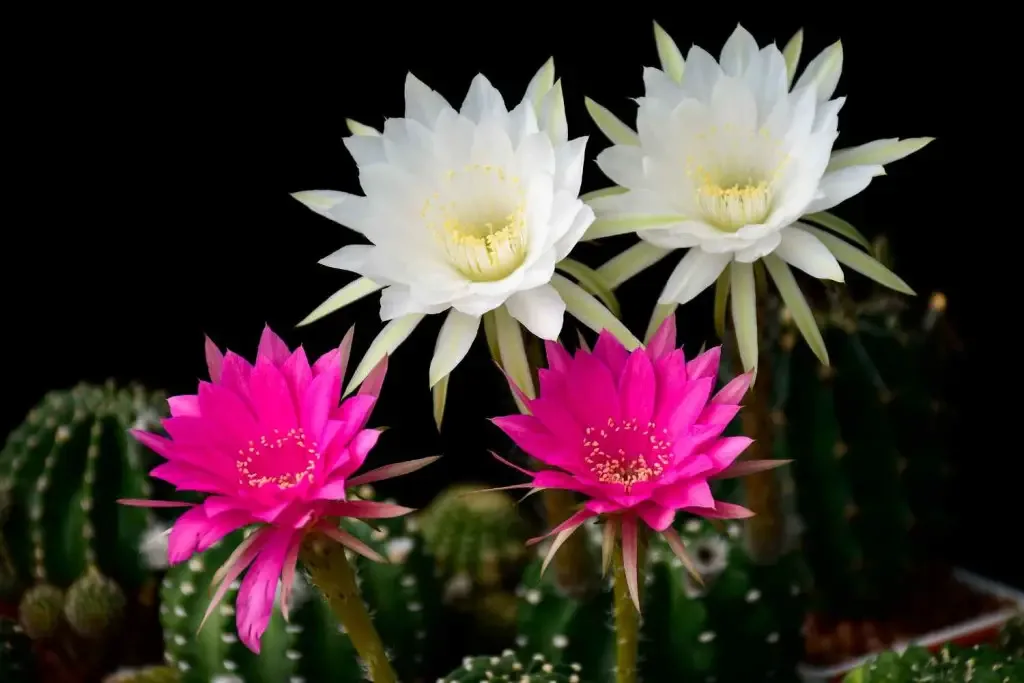
Follow Us:
Find us on YouTube, Instagram , Pinterest and TikTok! We love to Plant chat. We also comment, like and occasionally share your content to our daily stories. We’d love to see your plants. Share your joy in your houseplants. Happy Planting!
